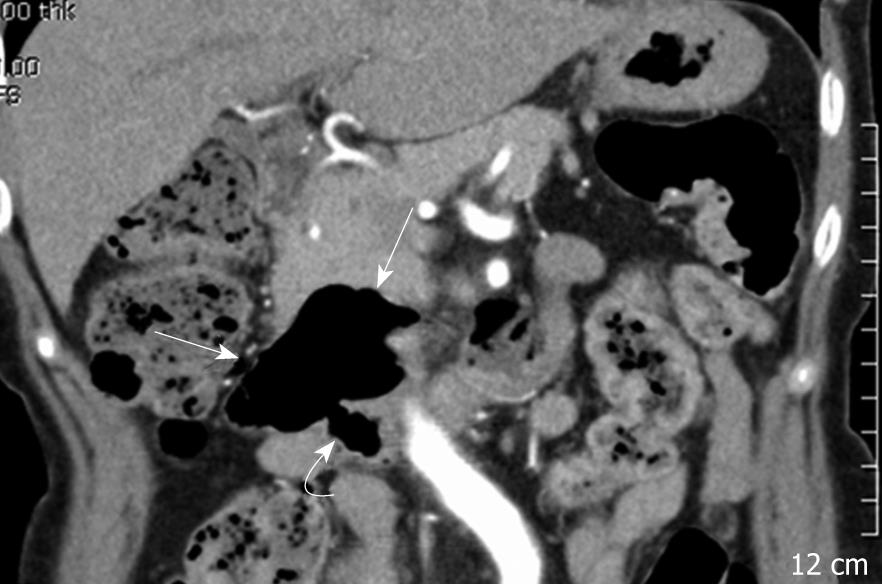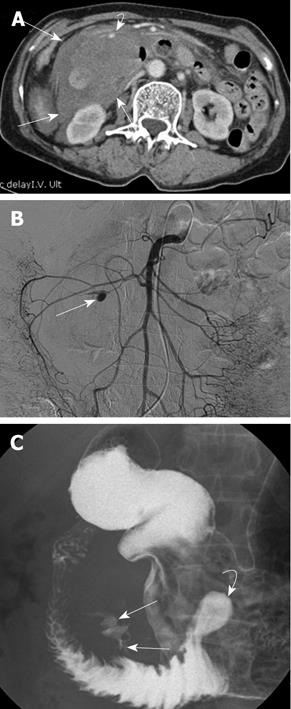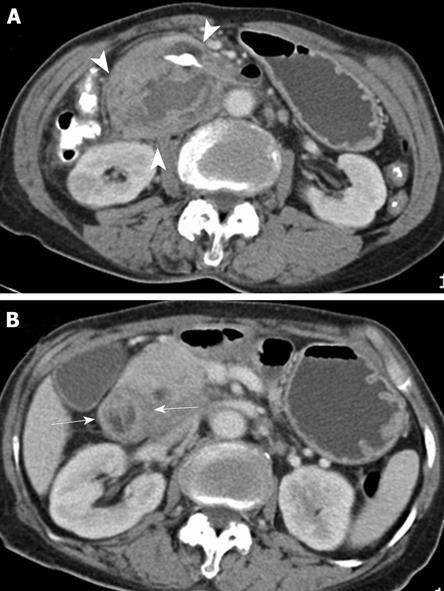Copyright
©2009 The WJG Press and Baishideng.
World J Gastroenterol. Aug 14, 2009; 15(30): 3819-3822
Published online Aug 14, 2009. doi: 10.3748/wjg.15.3819
Published online Aug 14, 2009. doi: 10.3748/wjg.15.3819
Figure 1 Computed tomography (CT) image two years before the admission shows an approximately 6 cm sized silent diverticulum (arrows) originating from the proximal third portion of the duodenum (curved arrow).
Figure 2 Diagnostic images on admission.
A: An approximately 7 cm sized acute duodenal diverticular hemorrhage (curved arrow) and surrounding large retroperitoneal hematoma (arrows) around the duodenum on contrast enhanced CT image; B: The causative arterial pseudoaneurysm (arrow) on superior mesenteric arteriogram; C: Barium leakage into the large hemorrhagic duodenal diverticulum (arrows) and another small silent diverticulum (curved arrow) in the duodenal third portion on upper gastrointestinal barium study.
Figure 3 CT images when the patient complained of gastrointestinal obstruction 2 wk after admission.
A: Previously noted large duodenal diverticular hemorrhage and retroperitoneal hematoma were decreased in size (arrowheads); B: However, marked edematous bowel wall thickening is newly visualized in the duodenal second and third portions (arrows).
Figure 4 Intra-operative findings.
A: A hard duodenal diverticulum filled with old hematoma, which was covering about 10 cm of the duodenal second portion, with severe peridiverticular fibrosis (arrows); B: The diverticular opening at the 3rd portion of the duodenum (arrow).
- Citation: Kwon YJ, Kim JH, Kim SH, Kim BS, Kim HU, Choi EK, Jeong IH. Duodenal obstruction after successful embolization for duodenal diverticular hemorrhage: A case report. World J Gastroenterol 2009; 15(30): 3819-3822
- URL: https://www.wjgnet.com/1007-9327/full/v15/i30/3819.htm
- DOI: https://dx.doi.org/10.3748/wjg.15.3819












